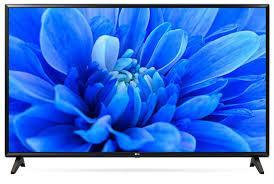50Hz and 60Hz are two different types of electrical frequencies which operate at the same time. Both frequencies operate at 50 Hertz. The frequency difference between these two modes is 1/60 of a Hz or one hertz. Generally, when you turn on your TV set and it’s powered on, it’s running with a 50Hz mode. However since the Earth uses a 60Hz rotating power frequency to rotate itself, your TV set can only run in a 50Hz mode if it has some type of internal motorized mechanism to synchronize its frequency with that rotation.
These motors vary from TV sets and TVs have different models for their motors. Some of these motors are internal and can be controlled by the remote control, most TVs come with external motors that must be adjusted manually. The same applies to VCRs, DVD players, and other electronic devices which comprise modern households. These external motors work with an AC power source so the voltage level of the power is fed to these motors accordingly.

Table of Contents
50HZ and 60Hz TV
These motors normally have an adjustment knob which is on the back of the product for user convenience. When you turn your motor frequency knob to 50Hz, it doesn’t physically change anything inside the product; It simply changes a voltage level between its internal and external parts. It also has a counter frequency which helps convert its single frequency into two frequencies that are required at one time.
Since almost all countries in Europe run their AC power at 50Hz, they use 50Hz motors in their products to make sure they can sync them with those countries’ power supply systems. On the other hand, the United States runs its AC power at 60Hz so its products have 60Hz motors. These motors also have a counter frequency to convert 60Hz into two frequencies – 50Hz and 60Hz each.
Why do we use it?
In simple terms, it all comes down to power. It’s easier to generate 50Hz because of the AC power rotation on the earth while 60Hz is more complicated because you have to synchronize it with your motors. These two frequencies are used for different purposes. The United States uses 60hz because the main commercial power energy source for homes is supplied at that frequency in most cities. The European countries use 50hz because their commercial energy source is at that frequency in their area as well.
Check also; Best 75 Inch TV
This is the main reason why Europe uses 50hz while the United States uses 60hz. One reason why the United States uses 60Hz is that it’s not so hard to convert the power frequency into two frequencies with a counter frequency, which doesn’t require a motorized mechanism. It’s also easier to control and handle these two frequencies since one of them (50Hz) is used for motors and TV sets in different countries around the world.
Which frequency should you use?
It really doesn’t matter because both are very compatible with each other in most cases. It’s simply a matter of convenience for users. In most cases, the frequency difference between 50Hz and 60Hz is so small that you can’t notice it, especially if the product has a counter frequency. The main reason why you don’t really need to pay attention to these frequencies.
Because there’s not much difference in their performance. However, to get proper information on how your TV set or VCR works, look up your manual and see if it uses a motorized mechanism or not. If it doesn’t have one then you don’t have to worry about whether it runs at 50Hz or 60Hz; both are compatible and will work properly together.
Is 50Hz or 60Hz better?
There are many advantages of using a 50Hz powered television set; one of them is the fact that it’s cheaper to produce and maintain these types of products. They are also more energy efficient than 60Hz. This means that in most cases you will get more TV hours for your buck when purchasing 50Hz television sets. However, there are major disadvantages to this 50Hz system as well; one being the fact that it has more interference during bad weather conditions and may cause your TV picture to go out entirely. This won’t happen with 60Hz systems.
Which is better to use?
50Hz is better to use because it’s a bit cheaper, more energy efficient, and maintenance-free. However, it has its disadvantages as well. The only reason why some people prefer using 60Hz is that it has less interference with bad weather conditions and can handle the 2 frequencies needed for the country at the same time. But like everything in life, there are pros and cons for each side; 50Hz is better for consumers but not so good for producers. 60Hz produces more energy but not so much for consumers. Both work on different frequencies which makes them both unique in their own way.
What happens if you plug 50Hz into 60Hz?
The main problem with this is that you will have a hard time getting a proper picture on your TV screen. It’s like saying you have a set of shoes for a particular event but you find out that it doesn’t fit you as well as your feet because of the different sizes. Each frequency has its own characteristics; some are compatible with each other while others aren’t. The same applies to 50Hz and 60Hz: One is better than the other depending on the user’s needs and the country they live in.
Check also: Best 55 Inch TV
Final Verdict
Probably the only real issue with 50Hz and 60Hz differences is that North America and Europe use different frequencies. It’s not much of a problem for US manufacturers since there are many items that are dual-frequency depending on where they’re sold; so it really doesn’t matter if you’re a manufacturer or a consumer. The main thing to look at when choosing a television set or other electronic devices is the size and number of inputs it has to plug into various video and audio devices.

Virat Raj is a Digital Marketing Practitioner & International Keynote Speaker currently living a digital nomad lifestyle. During his more than 10 years-long expertise in digital marketing, Virat Raj has been a marketing consultant, trainer, speaker, and author of “Learn Everyday yourself: In Pursuit of Learning” which has sold over 10,000 copies, worldwide.
